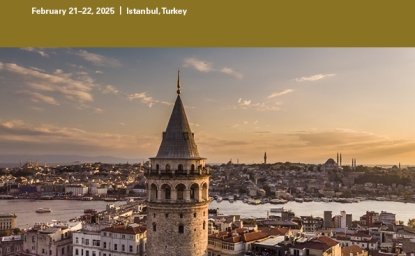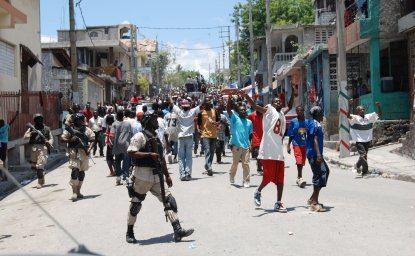190. Mediating Inter-ethnic Relations: Successes and Failures in the New Europe

Inter-ethnic disputes have been one of the worst setbacks in Eastern Europe since the fall of communism, and their impact has been disastrous. These conflicts have inhibited peaceful development in the post-communist period by displacing and killing large populations, retarding regional economies and investments, dragging reluctant Americans and Europeans into unpopular regional conflicts, as well as placing serious strains on the Euro-Atlantic alliance. Despite these outcomes, the majority of these conflicts have proven to be a case of political will. Their peaceful resolution necessitates the creation of institutional forms and practices which will accommodate rather than isolate and ignore inter- ethnic disputes.
Despite these negative examples, there have been a few quiet successes within the region which are equally worth noting. During the past decade, for example, Romania has made great strides in resolving the tensions existing among its ethnic Hungarian and Romanian populations.
The process has been long and laborious, but both sides have shown an increasing amount of tolerance and willingness to work together to create an agreeable solution. In 1991, representatives of all Romanian nationalities were brought together for the first time by the Project on Ethnic Relations (PER) and the Carnegie Foundation. Before this meeting, Hungarian and Romanian representatives had never openly discussed the issue of inter-ethnic relations. Despite initial resistance to face-to-face interaction and due to the international mediators' efforts to explain alternatives, both parties agreed that these discussions might be worth continuing. With the help of international mediators, the first breakthrough occurred during the next talks in Switzerland - the two sides devised an agreement which included the posting of bilingual public signs, the establishment of a national minorities council and the allocation of seats for Hungarians on the audio/visual commission.
Despite occasional glitches, the talks successfully created a platform for dialogue between the Hungarians and Romanians and further established an atmosphere which made it possible to initiate a multi-ethnic government in the next election.
The Romanian experience taught us that when approaching inter-ethnic conflict resolution, it is important to focus on the problem, not the technique. The mediators did, however, discover some techniques that worked well in the Romanian case, such as working from the inside with the decision making elites as much as possible. While community-level projects allow one to stay in touch with people at the grassroots level, in centralized governments it is important to stay at the center.
Another critical aspect is never to underestimate the possibility of educating the antagonists. It is important to bring the antagonists to the table without protocol or need to commit themselves, giving them open space for discussion. Along with the antagonists, it is extremely helpful to involve powerful international observers such as NATO, the US government or the EU, to exert subtle pressure by serving as a witness and as a reminder of the larger world outside.
Yet, the most important clue discovered during the resolution process was to convince the antagonists to expand definitions of their self interest. It can be difficult to get political leaders to act on the basis of high principle, but it is possible to get them to shift their definition of self interest to encompass behaviors more appropriate for resolving inter-ethnic conflict.
The case of Slovakia exhibits some important parallels to Romania's efforts and provides additional encouragement for improving inter-ethnic relations in the region. Talks between representatives of the ruling Movement for a Democratic Slovakia (HZDS) and the Hungarian opposition party began in 1995 in Washington, DC. After a series of discussions, the two sides produced, on paper, an agreement to cooperate on inter-ethnic affairs and to take practical steps in resolving disputes between the nation's majority Slovak population and its Hungarian minority.
Eventually, HZDS backed away from the agreement and failed to act upon it, but, like in Romania, a pattern of dialogue had been established which was adopted by their successors and, most importantly, a platform was created for future potential cooperation between Hungarians and Slovaks. Prior to these talks, there had been a great political divide between the Slovak and Hungarian reform parties in Slovakia. Reform-minded Slovaks were suspicious and fearful of attacks from the right, which accused them of cooperating with the Hungarians.
To date, in both Slovakia and Romania, there are underlying issues which remain unresolved. Even after the victory of the reformist Slovak Democratic Coalition in the 1998 elections, dialogue between Slovaks and Hungarians is limited. There are deep-rooted suspicions encompassed within a politically cooperative framework which limit discussion. Yet, the groundwork for collaboration and dialogue on inter-ethnic relations laid out by such basic efforts in Romania and Slovakia allow us to hold hope for the rest of the region.
Other parts of the region demonstrate similar progress. The Baltics have turned the corner in their relations with Russian minorities. Latvia has produced a new citizenship law that even the Russians recognized as progressive. Meanwhile in the Balkans, Macedonia has shown remarkable accommodation to its Albanian minority in the current government coalition. Similarly, Montenegro has developed a forward looking, correctly stated set of policies with respect to its Albanian and Muslim minorities. Bulgaria has also demonstrated dramatic visible change in dealing with its Turkish minority and describes itself as a model for regional inter-ethnic relations.
These examples are proof that the region's inter-ethnic conflicts are not primordial. While there are plenty of raw materials for ethnic disputes, the results of the past ten years have been largely dependent on political leadership which, in most cases, can be educated and worked with. There is one large exception: once large scale violence erupts, basic attitudes change, making it very difficult to return to the status quo. Events quickly spin out of control and become psychologically rooted. Bosnia and Kosovo are two perfect examples.
The question of whether the post-communist states will find some way to successfully live with these complex ethnic issues remains open. The next few years are likely to have long-term effects as political systems mature, patterns set in and our choices narrow. We must wait and see if these successful or partly successful experiments will be the dominant trend or whether the deep divisions and disruptions that are still so acute in the Balkans will be the majority influence.
Allen Kassof spoke at an EES Noon Discussion on January 12, 2000
Author

Global Europe Program
The Global Europe Program is focused on Europe’s capabilities, and how it engages on critical global issues. We investigate European approaches to critical global issues. We examine Europe’s relations with Russia and Eurasia, China and the Indo-Pacific, the Middle East and Africa. Our initiatives include “Ukraine in Europe”—an examination of what it will take to make Ukraine’s European future a reality. But we also examine the role of NATO, the European Union and the OSCE, Europe’s energy security, transatlantic trade disputes, and challenges to democracy. The Global Europe Program’s staff, scholars-in-residence, and Global Fellows participate in seminars, policy study groups, and international conferences to provide analytical recommendations to policy makers and the media. Read more

Explore More
Browse Insights & Analysis
Iraq Should Consider Extending UNAMI’s Mission


